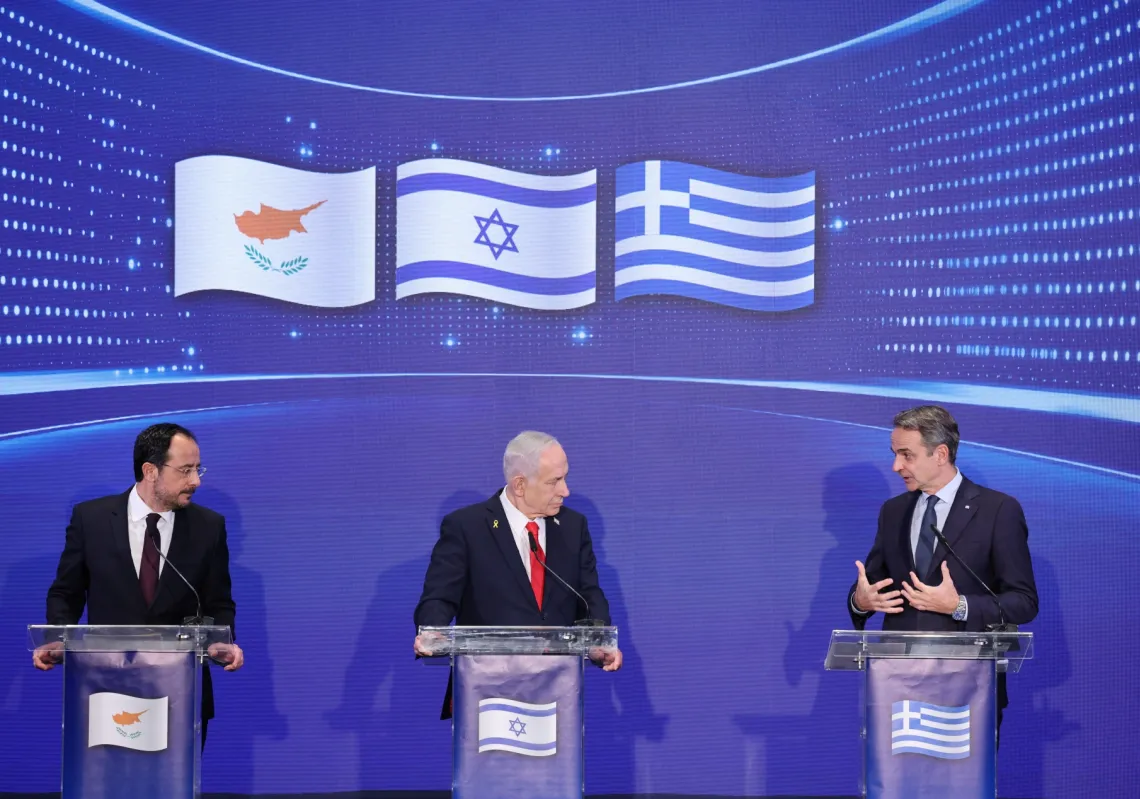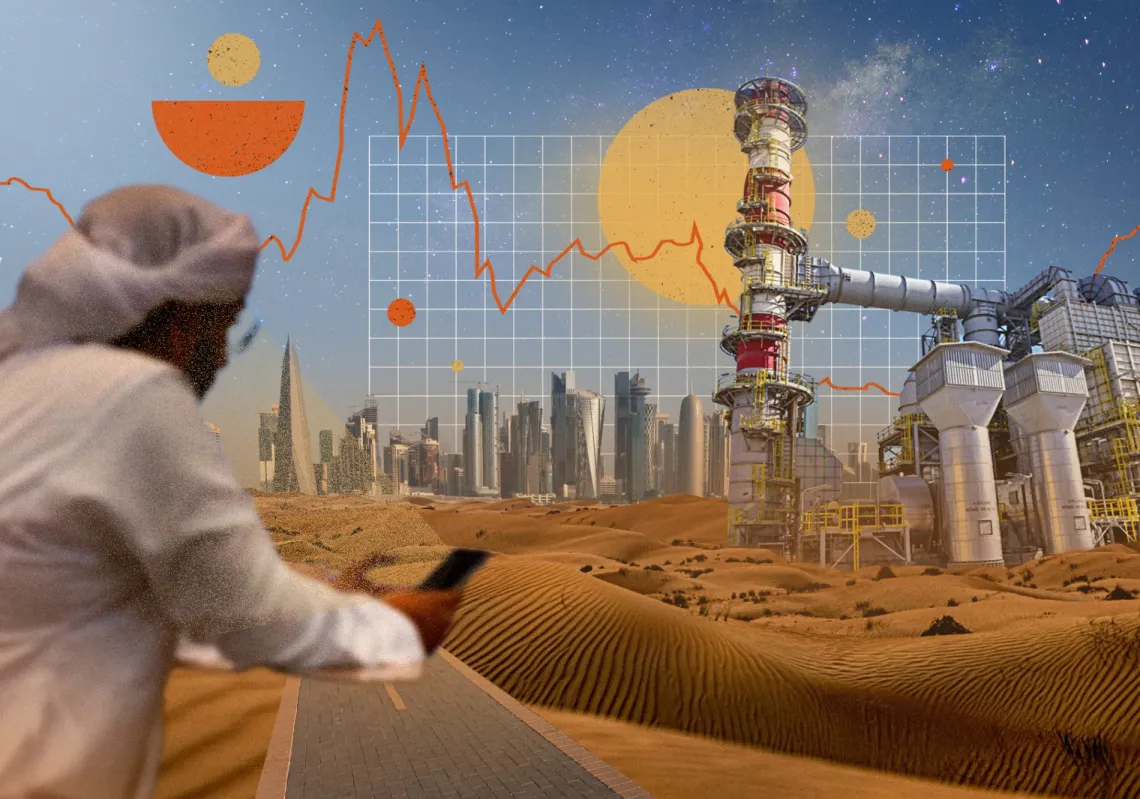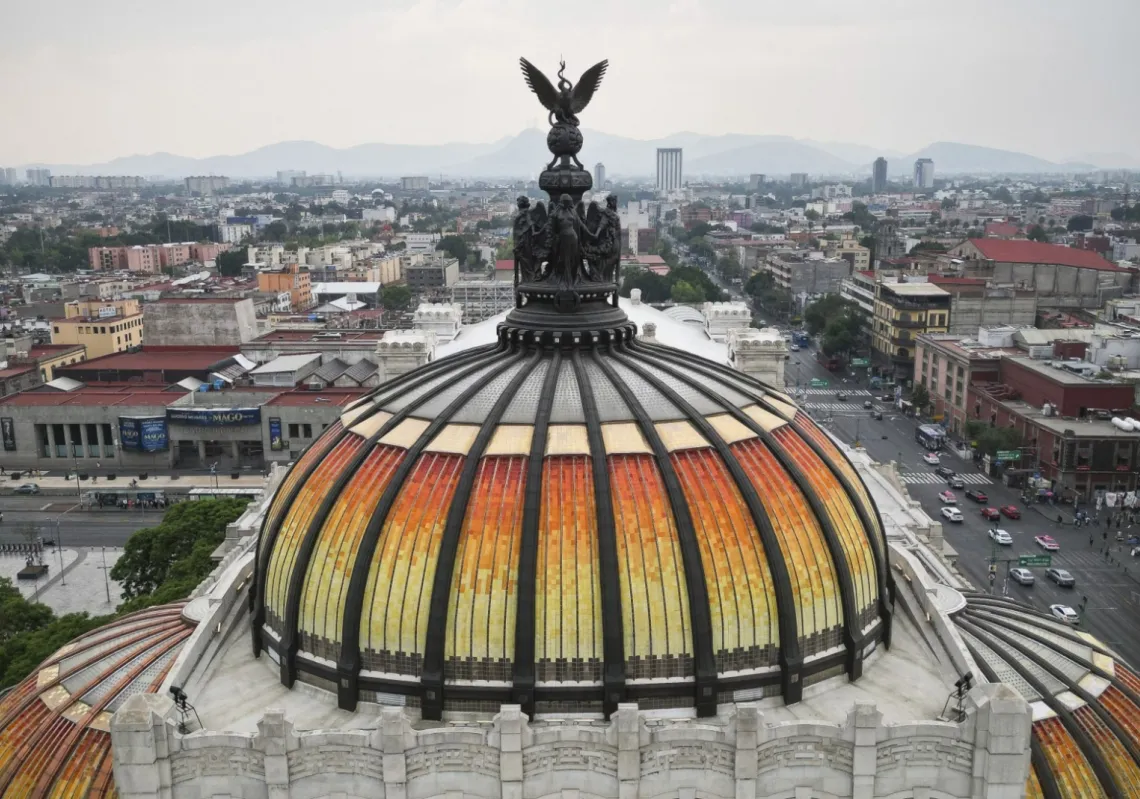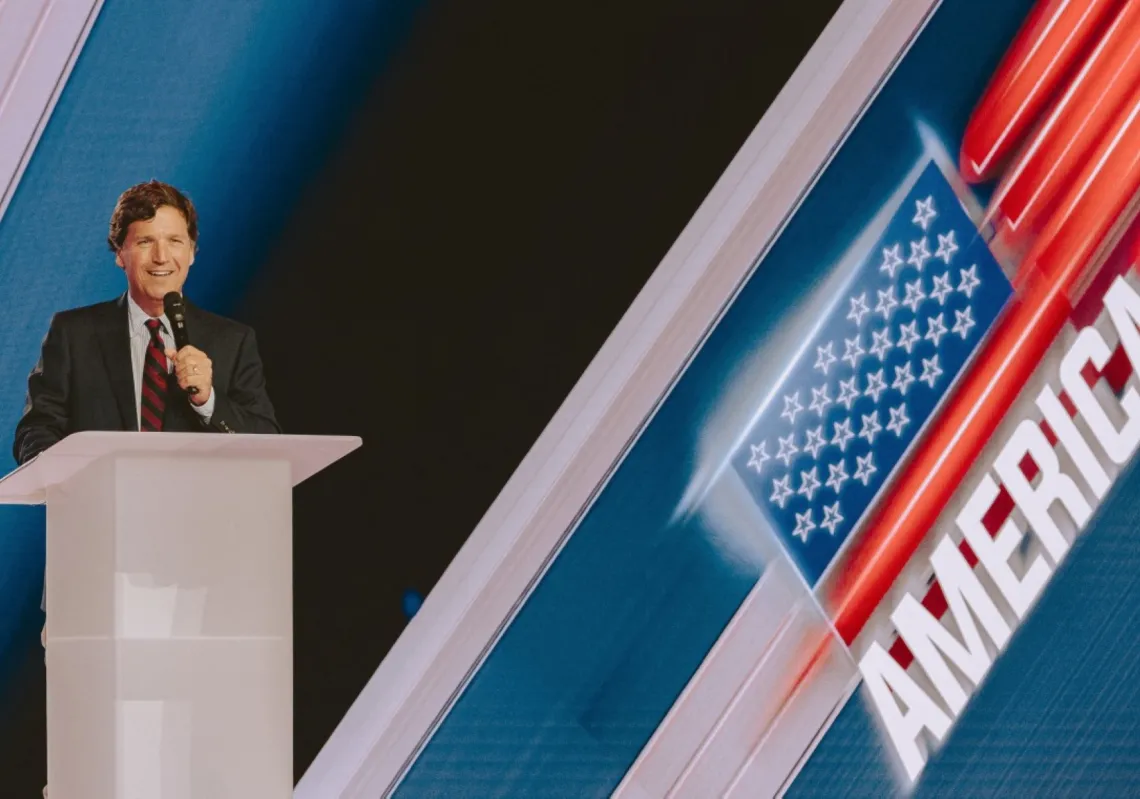Last week, a rare collection from the cartoons of renowned Egyptian artist Salah Jaheen (1930-1986) was on display for the public.
Under the auspices of the Egyptian Ministry of Culture, the combined efforts of the Egyptian Caricature Association, Caricature Museum in Fayoum and the Egyptian Cultural Development Fund have put together this unique exhibition under the title Fi Al Fadia w Al Maliana (Over Anything and Everything) which is the name of a cartoon series that Jaheen drew decades ago.
At the premises of Beit El-Souhemi, built in 1648 A.D. in the heart of Islamic Cairo, the walls are adorned with witty sarcastic cartoons that document decades of the Arab Nation as well as the Egyptian one. Illustrations varied between political and social topics. There was one cartoon discussing the Lebanese war to which he drew the world’s attention and pointed it in the direction of Israel saying:
“Civil war between Muslims and Christians, leftists and rightist, between the tall and the short, as long as all Arabs are fighting with one another.”
Another outstanding cartoon dealt with Egypt’s most favorite summer topic — women’s bathing suits and their right to swim in the sea. This cartoon wittily depicts two men looking at an empty space on the beach and musing “Did you see the swimsuit of the woman who is not even here?”

“This exhibition comes as the beginning of a series of exhibitions of Egypt's renowned cartoonists and their works, and we chose to begin with Salah Jaheen,” explained Mohamed Abla, Egyptian artist and founder of Caricature Museum in Fayoum. Abla, who spent around 20 years in collecting original cartoons of renowned artists, has managed to create a true panorama that depicts a world parallel to where the Arab nation once lived.
Renowned artist Salah Jaheen is a multitalented Egyptian philosopher/cartoonist and a pillar of vernacular Egyptian poetry. At an early age, he enriched the Egypt and the Arab world with his poems. He was in his twenties when he finished the famous Robaiat (Quartets) which are four line poems revealing a philosophical insight. Jaheen’s lyrics were sung by Egyptian stars such as Abdel Halim Hafez. As a screenwriter, who can forget films that became icons of Egyptian classic cinema starring the divas Souad Hosney and Hussien Fahmy. Khali Balak Men Zuzu (Take Care of Zuzu) ran almost a year non-stop in Egyptian cinemas.
As for the cartoons, Jaheen has three main phases in his cartoon career, Rose Al-Youssef, Sabah Al-Kheir magazines, and Al-Ahram newspaper. “The exhibition includes cartoons that reflect such stages. It is easy to observe that in Sabah Al-Kheir he focused on creating new concepts and characters with the idea of Qahwat Al Nashat (The Coffee House of Energetic People) which displays government employees always sitting there sleepy instead of being at their offices. He also created the Abu Al-Mafhomia (Mr. Know-it-all) to mock the social taboos,” explained Abla.
Abla added that soon a bigger exhibition will be held at the premises of Prince Taz Palace, where items reflecting the lifetime works of Jaheen in his numerous artistic realms will be on display.
Mohamed Abla, aside from being a renowned Egyptian painter, is also a cartoon collector. For around 20 years, he has collected original cartoon works of Egyptian cartoonists and has managed to share these gems with the public since 2011, when he founded Egypt’s first Caricature Museum in Tunis Village, Fayoum governorate.
Cartoon as an art started out in Europe in the middle ages, but flourished in the 19th century.
In the 19th century, it was the “Punch or the London Charivari” weekly magazine that first introduced and popularized cartoon as a humorous modern art of illustration between the 1840s and 1850s.
However, the art of cartoon was known in ancient Egypt. Satirical Ostraca is an ancient Egyptian art of satire through paintings. They were found in Deir Al-Madina, Luxor. The art that reveals wit and a great sense of humor depicted funny situations such as a cat fearing a mouse, and many others. Such art remains a vivid element of intangible heritage in Egypt as younger generations are now producing their own comic magazines. Magazines like Al-Qahera, Metro, and Shobeik Lobeik are quite popular among young Egyptians as they are re-introduced to their cities and modern times from a very comic perspective.
This rise in the awareness and interest of the younger generations about cartoons and their impact as a rich artistic medium and tool for self-expression has increased the need of the younger generation to look back at the pioneers of Cartoon and reconnect.
“The Museum of Caricature started producing a series of short video documentaries on renowned Egyptian cartoonists. The first was commemorating late cartoonist Hakem,” Ablaa assured us.












